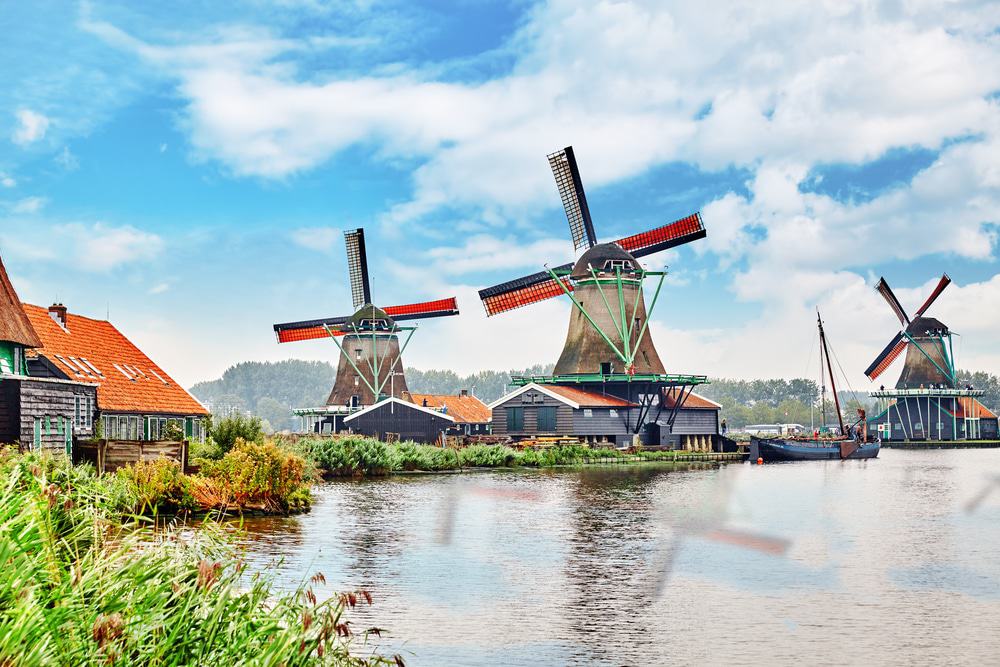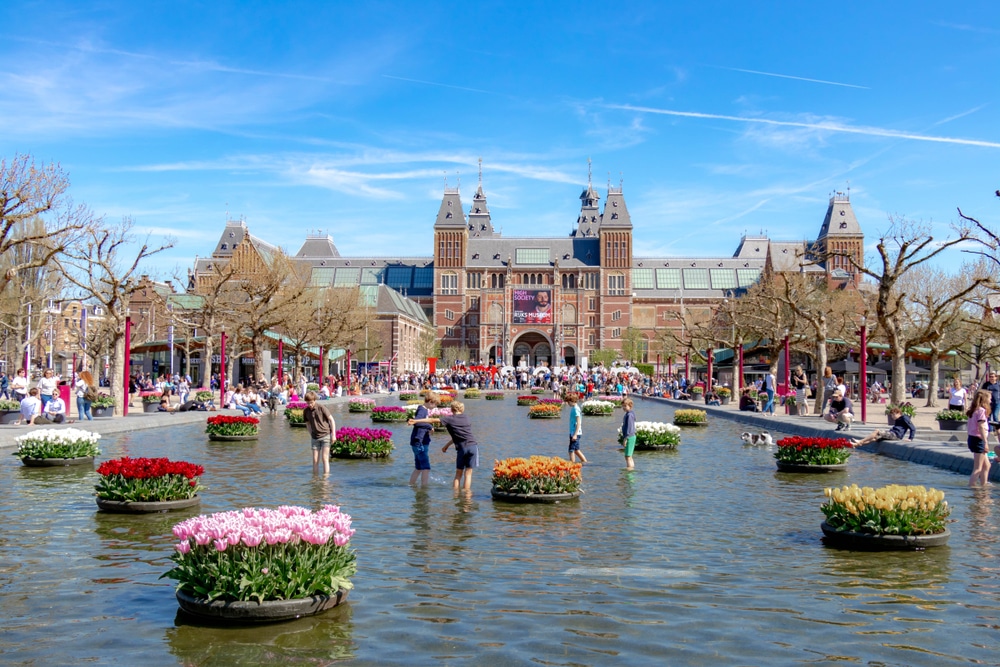
The Netherlands, often affectionately called Holland, conjures images of vibrant tulip fields, iconic windmills turning gently in the breeze, and picturesque canals reflecting gabled houses. While these symbols are an integral part of its charm, they only scratch the surface of what this compact, innovative, and historically rich nation has to offer. From the Golden Age art of Amsterdam to the futuristic architecture of Rotterdam, the Netherlands is a country of captivating contrasts, where centuries-old traditions coexist with progressive, modern life. This guide will take you on a journey through its must-see attractions, culinary delights, and practical tips for an unforgettable Dutch adventure.
A Glimpse into Dutch History: Forged by Water and Will
To truly appreciate the Netherlands, one must understand its unique history, defined by a constant struggle and partnership with water. Much of the country lies below sea level, a testament to centuries of incredible engineering through a complex system of dikes, canals, and windmills. This mastery over the elements fueled the nation’s spirit of ingenuity and resilience.
Related Articles about Beyond Tulips and Windmills: A Comprehensive Guide to the Netherlands:
- ¡Viva México! A Comprehensive Guide to the Top Things to Do in the Land of Sun, Culture, and Flavor
- Unveiling the Rainbow Nation: Top Things to Do in South Africa
- Canada: A Grand Tapestry of Nature, Culture, and Adventure – Your Ultimate Travel Guide
- La Dolce Vita: Unveiling the Timeless Charms and Top Experiences of Italy
- Unveiling the Joys of France: A Comprehensive Guide to Experiences
The 17th century marked the Dutch Golden Age, a period of unparalleled economic, artistic, and scientific prosperity. As a dominant maritime power, the Dutch East India Company (VOC) established trade routes across the globe, bringing immense wealth back to cities like Amsterdam. This era funded the creation of the city’s iconic canal ring and nurtured artistic geniuses like Rembrandt van Rijn and Johannes Vermeer, whose masterpieces now hang in the country’s world-class museums. This history of trade, tolerance, and artistic brilliance has left an indelible mark on the Dutch landscape and psyche, creating a culture that is both pragmatic and profoundly creative.
Main Attractions: The Unmissable Dutch Experience
The Netherlands may be small, but its attractions are densely packed and diverse. Whether you’re an art lover, a history buff, an architecture enthusiast, or a nature seeker, there is something for everyone.
1. Amsterdam: The Vibrant Heart
The nation’s capital is a destination in itself. While it’s easy to get lost in its beauty, a few key experiences are essential.
- The Canal Ring (Grachtengordel): A UNESCO World Heritage site, Amsterdam’s 17th-century canal belt is the city’s soul. The best way to experience it is from the water. A canal cruise offers a unique perspective on the elegant gabled houses, historic bridges, and charming houseboats. Alternatively, do as the locals do: rent a bike and cycle along the Prinsengracht, Keizersgracht, and Herengracht for a more intimate exploration.
- Museumplein (Museum Square): This cultural hub is home to three of the world’s most renowned museums.
- Rijksmuseum: The national museum of the Netherlands, it showcases 800 years of Dutch art and history. The undisputed highlight is Rembrandt’s monumental masterpiece, The Night Watch.
- Van Gogh Museum: Housing the largest collection of Vincent van Gogh’s work in the world, this museum offers a poignant journey through the artist’s life and evolution, from his early somber works to his vibrant, post-impressionist masterpieces.
- Stedelijk Museum: For lovers of modern and contemporary art and design, the Stedelijk is a must-visit.
- The Anne Frank House: A powerful and moving experience, this is the actual house where Anne Frank and her family hid from the Nazis during World War II. Walking through the secret annex is a sobering reminder of history. Crucial Tip: Tickets sell out months in advance and must be booked online. Spontaneous visits are not possible.
- The Jordaan District: Escape the main tourist crowds and wander through the narrow streets and canals of the Jordaan. Once a working-class neighborhood, it is now a trendy area filled with art galleries, boutique shops, cozy pubs (known as bruin cafés), and some of the city’s most picturesque scenes.
2. Rotterdam: A Symphony of Modern Architecture
Heavily bombed during WWII, Rotterdam reinvented itself as a showcase for bold, innovative architecture. It stands in stark contrast to historic Amsterdam.
- The Cube Houses (Kijk-Kubus): Designed by architect Piet Blom, these tilted, cube-shaped homes are an iconic example of Rotterdam’s architectural daring. You can even visit a show-cube to see what it’s like to live inside.
- Markthal (Market Hall): A food lover’s paradise set within a spectacular horseshoe-shaped arch. The interior ceiling is adorned with a massive, colorful artwork, while below, stalls sell everything from fresh Dutch cheese and herring to international delicacies.
- Erasmus Bridge: Nicknamed "The Swan" for its elegant, asymmetrical pylon, this cable-stayed bridge is a symbol of the city and a beautiful sight, especially when illuminated at night.
3. The Hague (Den Haag): Royalty and International Justice
As the seat of the Dutch government and home to the royal family, The Hague exudes a stately, international air.
- The Binnenhof: The political heart of the Netherlands for centuries, this complex of buildings is a stunning example of Gothic architecture.
- Mauritshuis: This intimate art museum is a treasure trove of Dutch Golden Age paintings. It is home to Vermeer’s iconic Girl with a Pearl Earring and Rembrandt’s The Anatomy Lesson of Dr. Nicolaes Tulp.
- Peace Palace: Housing the International Court of Justice, this impressive building is a symbol of The Hague’s status as the international city of peace and justice.
4. Utrecht: Charming Canals without the Crowds
Often described as a more relaxed, cozier version of Amsterdam, Utrecht is a delightful university city built around the magnificent Dom Tower. Its unique, two-level canals (Oudegracht) are lined with cellars that have been converted into lively restaurants, bars, and shops right at the water’s edge. Climb the Dom Tower for a panoramic view of the city.
5. The Quintessential Countryside: Windmills and Tulips
- Keukenhof Gardens (Seasonal): Open from mid-March to mid-May, Keukenhof is the "Garden of Europe." Here, over seven million tulips, daffodils, and hyacinths burst into a breathtaking display of color. It’s an essential spring experience.
- Kinderdijk and Zaanse Schans: For the iconic windmill experience, you have two fantastic options. Kinderdijk is a UNESCO World Heritage site, featuring 19 authentic, historic windmills in their original location, showcasing Dutch water management. Zaanse Schans is more of a living open-air museum, where you can see windmills in action, visit a wooden clog workshop, and sample cheese.
Savoring the Netherlands: A Culinary Journey
Dutch cuisine is hearty, comforting, and delicious. Be sure to indulge in these local specialties:
- Stroopwafel: Two thin, waffle-like wafers stuck together with a layer of sweet, caramel-like syrup. Best enjoyed warm from a street market.
- Haring (Herring): A national delicacy. Raw herring, lightly brined and served with chopped onions and pickles, is a must-try for the adventurous. The traditional way to eat it is to hold it by the tail and lower it into your mouth.
- Patat (Fries): The Dutch take their fries seriously. Served in a paper cone, they come with a wide variety of sauces, the most popular being patatje oorlog ("war fries"), a combination of mayonnaise, satay sauce, and chopped onions.
- Bitterballen: Crispy, deep-fried meatballs with a savory ragout filling, typically served with mustard. They are the perfect snack to accompany a Dutch beer.
- Dutch Cheese: Go beyond the standard supermarket Gouda and Edam. Visit a cheese shop or market (like the famous one in Alkmaar) to sample aged cheeses, smoked cheeses, and those flavored with herbs and spices.
- Poffertjes: Tiny, fluffy, puffed-up pancakes served with butter and powdered sugar. A delightful treat for all ages.
Navigating the Netherlands: Transportation Options
Getting around the Netherlands is incredibly efficient and straightforward.
- Train: The Dutch national railway, Nederlandse Spoorwegen (NS), connects virtually every city and town with frequent, comfortable, and punctual service. It is the best way to travel between cities. Using an OV-chipkaart (a reloadable public transport card) is the easiest way to pay for travel.
- Cycling: The Netherlands is the world’s most bike-friendly country. With flat terrain and an extensive network of dedicated bike paths, cycling is not just a mode of transport but a cultural experience. Rentals are available in every city and train station.
- Public Transport (City): In cities like Amsterdam and Rotterdam, trams are the most convenient way to get around, supplemented by buses and metros.
- Driving: While a car can be useful for exploring remote countryside areas, it is strongly discouraged for city centers, where streets are narrow, parking is scarce and expensive, and public transport is far more efficient.
Practical Travel Tips for a Smooth Trip
- Book in Advance: For major attractions like the Anne Frank House and the Van Gogh Museum, booking tickets online weeks or even months ahead is essential to avoid disappointment.
- Embrace the Weather: The Dutch have a saying: "There’s no such thing as bad weather, only bad clothing." The weather can be unpredictable, so dressing in layers and always carrying a light raincoat or umbrella is wise.
- Language: Nearly everyone in the Netherlands speaks excellent English, especially in tourist areas. However, learning a few Dutch phrases like Dank je wel (Thank you) and Goedemorgen (Good morning) is always appreciated.
- Payment: Credit cards are widely accepted, but it’s good to have some euros on hand for smaller purchases or at street markets.
When to Visit: The Best Time for Your Dutch Adventure
- Spring (April-May): This is peak season, and for good reason. The tulips are in full bloom, and the country celebrates King’s Day (Koningsdag) on April 27th, a massive, nationwide street party. The weather is pleasant but can be unpredictable.
- Summer (June-August): Long, sunny days and warm weather make this a popular time for festivals and enjoying the outdoor café culture. Expect larger crowds and higher prices.
- Autumn (September-October): A wonderful shoulder season with fewer tourists, beautiful autumn colors in the parks and along the canals, and still relatively mild weather.
- Winter (November-February): The coldest and darkest time of year, but it has its own charm with cozy cafés, festive Christmas markets, and the magical (though rare) possibility of ice skating on the canals.
Where to Stay: Accommodation Options
The Netherlands offers a wide range of accommodation. In Amsterdam, you can find everything from luxurious canal-side hotels and charming boutique guesthouses in the Jordaan to budget-friendly hostels. For a unique experience, consider staying in a converted canal house. In other cities like Utrecht and The Hague, accommodation is generally more affordable. For a truly Dutch experience in the countryside, look for a cozy Bed & Breakfast or a farm stay.
Conclusion
The Netherlands is a nation that constantly surprises and delights. It is a country where you can marvel at a Rembrandt masterpiece in the morning, cycle past 18th-century windmills in the afternoon, and dine in a hyper-modern architectural marvel in the evening. It is a land shaped by water, colored by flowers, and defined by a spirit of creativity and resilience. So pack your bags, rent a bike, and prepare to discover the multifaceted charm of this remarkable corner of Europe.








